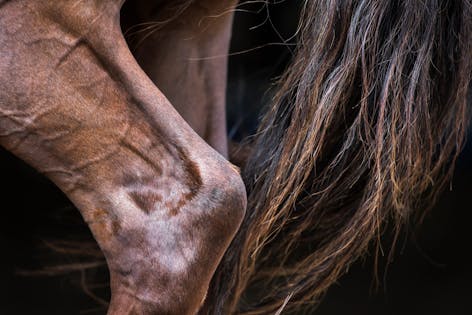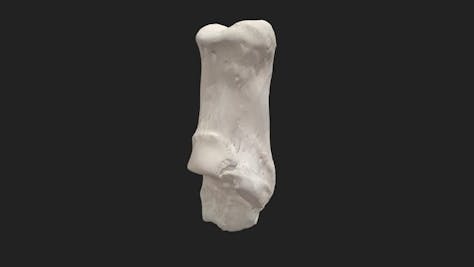horses hock info...
- The tibia is one of the long bones in a horse's lower limb, specifically in the hind leg. Here are five important things to know about a horse's tibia:
- Structure: The tibia, often referred to as the "shin bone," is one of the two long bones in a horse's lower leg, the other being the fibula. It runs from the stifle joint (equivalent to the human knee) to the hock joint, where it joins the tarsal bones.
- Function: The tibia is a weight-bearing bone and is essential for the support and locomotion of the horse. It helps transmit the horse's weight and the forces generated during movement from the hindquarters to the hooves.
- Vulnerability to Injury: The tibia is a strong bone, but it can be susceptible to injuries, such as fractures. Tibial fractures can be caused by trauma, overexertion, or other factors. These fractures can be serious and may require surgical intervention or other forms of treatment.
- Lameness: Tibial injuries can lead to lameness in horses. Lameness is often a noticeable sign that there may be a problem with the tibia. If a horse displays lameness in the hind leg, a veterinarian should be consulted for a thorough examination and diagnosis.
- Rehabilitation: Treatment for tibial injuries can vary depending on the severity and location of the injury. It may involve rest, immobilization, or surgical repair. Rehabilitation protocols are often necessary to help the horse regain strength and mobility after a tibial injury.
- It's important for horse owners and caregivers to be aware of the significance of the tibia in a horse's lower limb and to take appropriate measures to prevent injuries and provide the necessary care and rehabilitation in the event of tibial issues. Regular veterinary care and early intervention are essential for maintaining a horse's leg health and overall well-being.





